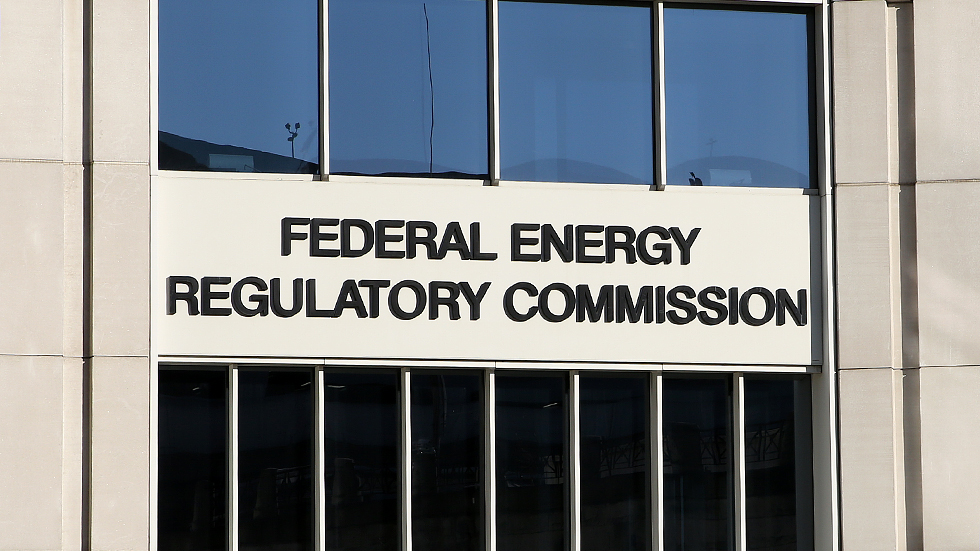Overnight Energy & Environment — Democrats detail clean electricity program
Welcome to Thursday’s Overnight Energy & Environment, your source for the latest news focused on energy, the environment and beyond. Subscribe here: digital-staging.thehill.com/newsletter-signup.
Today we’re looking at House Democrats’ proposed clean electricity payment program (now renamed the Clean Electricity Performance Program), the nomination of a new energy regulator and the latest move from the EPA on Alaska’s Bristol Bay.
For The Hill, we’re Rachel Frazin and Zack Budryk. Write to us with tips: rfrazin@digital-staging.thehill.com and zbudryk@digital-staging.thehill.com. Follow us on Twitter: @RachelFrazin and @BudrykZack.
Let’s jump in.
House Democrats outline transition to clean electricity

House Democrats on Thursday outlined their plan for a clean electricity payment program to be included in a $3.5 trillion spending bill.
The House Energy and Commerce Committee said in a fact sheet that the initiative would define clean electricity in a way that effectively rules out fossil fuels that don’t use technology to capture their emissions.
More details: Under the $150 billion program, a cornerstone of Democrats’ climate change goals, electric providers would receive grants if they increase the amount of clean energy supplied to customers by 4 percent compared to the previous year.
Providers who fail to reach the 4 percent threshold would owe money to the Energy Department.
So what else is in there?
- An additional $30 billion for lead pipe removal (combined with the bipartisan infrastructure bill’s $15 billion, Democrats are pitching a total of $45 billion for the effort.)
- $13.5 billion for construction of electric vehicle charging infrastructure, electrification of industrial and medium-heavy duty vehicles and making sure that states have the resources to develop “energy transportation plans” (reminder: the bipartisan bill also has funds for EV charging)
- A methane fee for oil and gas that Democrats say would hold “individual companies responsible for their own leaks and excess methane pollution.”
- $27.5 billion for a “Greenhouse Gas Reduction Fund” for climate finance institutions that support the deployment of green technologies.
And some politics: The proposal comes as Democrats plow ahead with their $3.5 trillion budget reconciliation measure, despite some resistance from Sen. Joe Manchin (D-W.Va.), who has called for a “pause” on moving forward with the legislation. Democrats will need the support of all 50 members of their caucus in the Senate since no Republicans are expected to vote for the bill.
The House Energy and Commerce is scheduled to mark up its $486.5 billion portion of the bill next week.
Read more about the E&C proposal here.
Biden nominates DC regulator to federal energy commission

President Biden on Thursday nominated Willie Phillips Jr., a utility regulator for the District of Columbia, to serve on the Federal Energy Regulatory Commission (FERC).
The White House announcement said Phillips has nearly 20 years of legal expertise, working as a regulator as well as in private practice. It also cited his work on implementing the city’s climate and clean energy goals.
Phillips’s nomination follows the recent departure of Neil Chatterjee — a Republican — from the commission after his tenure expired over the summer.
Phillips has chaired D.C.’s Public Service Commission since his appointment by then-Mayor Vincent Gray (D) in 2014. Current D.C. Mayor Muriel Bowser (D) re-nominated him in 2018.
But he has a bipartisan past: About 20 years ago, he reportedly worked for then-Sen. Jeff Sessions (R-Ala.).
Read more about Phillips’s nomination here.
EPA seeks protections for Alaska’s Bristol Bay

The Biden administration announced Thursday it is seeking to restore protections for Alaska’s Bristol Bay, further imperiling a controversial proposed mine that would have been situated at the headwaters to the bay.
The administration indicated in a legal filing that it planned to ask a court to vacate a move by the prior Trump administration to withdraw Obama-era restrictions for the bay.
Bristol Bay is a major salmon-producing region, and the 2019 decision that the Environmental Protection Agency (EPA) is now seeking to undo had initially paved the way for a gold and copper mine project in the area, though the Trump administration ultimately rejected the project, known as the Pebble Mine.
The project’s proponents pointed to its economic benefits, but opponents feared that its discharges could contaminate local waters.
But the mine was already in trouble: The decision by the Trump administration to reject the Pebble Mine, which was announced in late November 2020, meant the project’s future was already in jeopardy before the latest EPA decision.
Read more about the decision here.
TAKING (DIS)CHARGE
The EPA announced on Wednesday that it will propose a rule to set the first-ever limits on PFAS — also known as “forever chemicals” — discharges.
In a new plan released on Wednesday, the agency affirmed that it would propose a rule setting limits for PFAS wastewater discharges from facilities that manufacture the substances, as well as from chromium electroplating facilities.
The plan also says that the agency revised rules surrounding discharges of other pollutants from facilities that slaughter or process meat and poultry that were last updated in 2004.
But on PFAS, some are already pushing for more: “This is long overdue but welcome news that the EPA will finally begin to regulate dangerous PFAS discharges into the environment,” said Rep. Chris Pappas (D-N.H.), in a statement. “ But we need additional protections to safeguard the environment and public health, and the EPA should expand these regulations to other known industries that are actively discharging these forever chemicals.”
Read more about the situation here.
FUELING CHANGE
The Biden administration on Thursday announced a series of industry-backed actions aimed at reducing the climate impact of air travel, with a goal of cutting aviation emissions by 20 percent by 2030.
The departments of Energy, Transportation and Agriculture will collaborate on a goal of meeting 100 percent of aviation fuel demand — around 35 billion gallons a year — with sustainable aviation fuels (SAFs) by 2050.
What’s that? SAFs are defined as those that reduce lifecycle greenhouse gases by half compared to conventional fuels. According to a fact sheet released by the White House, the SAF production targets in the executive actions would result in a 20-percent reduction in aviation emissions by the end of the decade and produce 3 billion gallons of sustainable fuel. The industry used about 18.3 billion gallons of fuel altogether in 2019.
The White House also announced 14 grants totaling more than $3.6 million that the Federal Aviation Administration (FAA) will disburse to develop and test new sustainable fuels.
Read more about the push here.
CLIMATE AND DISABLED COMMUNITIES
Disabled people, who are already among the most adversely affected by climate change, are facing new risks from climate mitigation efforts.
Advocates are sounding the alarm after July flooding in Germany killed 12 residents of a group home for disabled people in the town of Sinzig that was unable to evacuate in time. Almost exactly a year before, flooding killed 14 nursing home residents in Kuma, Japan.
“As more and more extreme weather events occur due to changing climate conditions, this risk becomes greater,” said Mary Keogh, author of a 2020 paper that found disabled people are among the five groups most vulnerable to the impacts of climate change.
Comparatively, 10 to 15 percent of all people are estimated to be disabled in some way — making disabled people disproportionately at risk from climate change.
Those figures build on earlier research showing that disabled Americans are two to four times more likely to sustain critical injuries during disasters.
But environmental efforts can also leave out disabled people. However, despite these disproportionate impacts, efforts to combat climate change or mitigate its effects are frequently inaccessible or counterproductive for disabled people.
“[M]any climate friendly plans or products are not inclusive or accessible for them. For example, many persons with disabilities are not able to join the campaign to use public transportation due to the inaccessibility of public transportation,” Elham Youssefian, an adviser to the International Disability Alliance, told The Hill in an email.
Read more about how such efforts impact disabled people here.
WHAT WE’RE READING
- Inside the Ohio factory that could make or break Biden’s big solar energy push, The Washington Post reports
- Officials break ground on NJ wind energy construction port, The Associated Press reports
- Wisconsin lawmakers draft bill to end mandatory wolf hunt, The Wisconsin State-Journal reports
- California asks Biden administration to allow gas plants to run at maximum, Reuters reports
- Judge deals blow to Obama fossil fuel royalty rule, E&E News reports
ICYMI
- Summer of 2021 tied for hottest in US since 1936 Dust Bowl
- Reconciliation package’s clean electricity program would create over 7M jobs: Analysis
- Environmental groups call for immediate restoration of national monuments shrunk by Trump
- California drought driving up greenhouse gas emissions: study
- Tropical Storm Mindy threatens flooding in Florida panhandle
And finally, something offbeat and off-beat: Zebras on the loose in Maryland!
That’s it for today, thanks for reading. Check out The Hill’s energy & environment page for the latest news and coverage. We’ll see you Friday.
Copyright 2024 Nexstar Media Inc. All rights reserved. This material may not be published, broadcast, rewritten, or redistributed..







